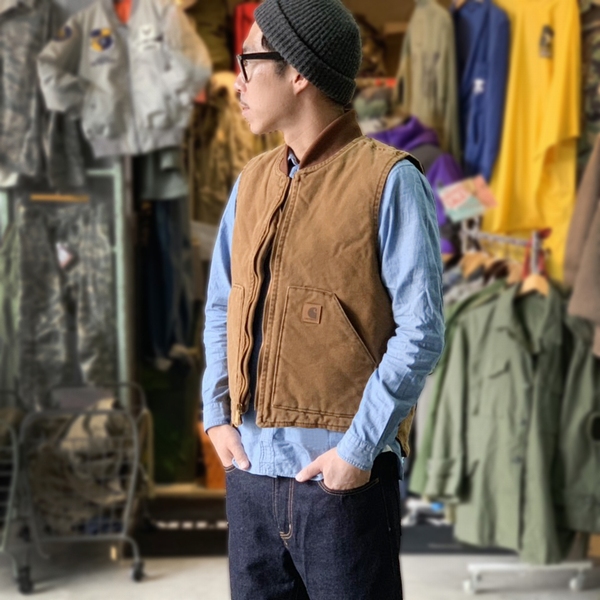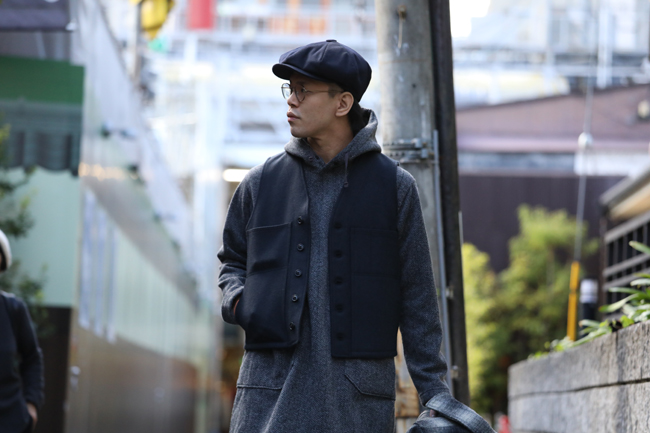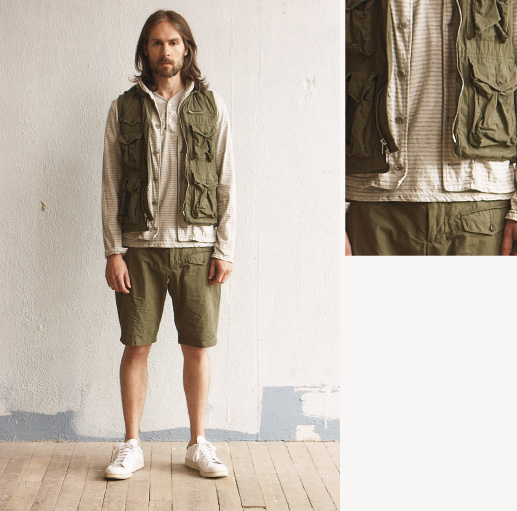
“A man who wears a vest is a man with nothing up his sleeve.” -Ancient Banana Republic proverb
We all enjoyed light jacket season for the few hours it lasted, but as humidity thickens and the heat of the summer looms, there are few truly tolerable layers — soon even tshirts and polos will seem like too much. Men who favor tailoring might try linen sportcoats, or safari-style jackets, which look amazing but really are really only a half measure toward keeping cool.
A more casual (and more literal) half measure may be the vest. The cliched metaphor for optimism vs pessimism is how you see a half glass of water: is it half full, or half empty? Is a vest halfway to a jacket? Or a sad jacket butchered of its sleeves? I don’t have the answer, but I do like vests.
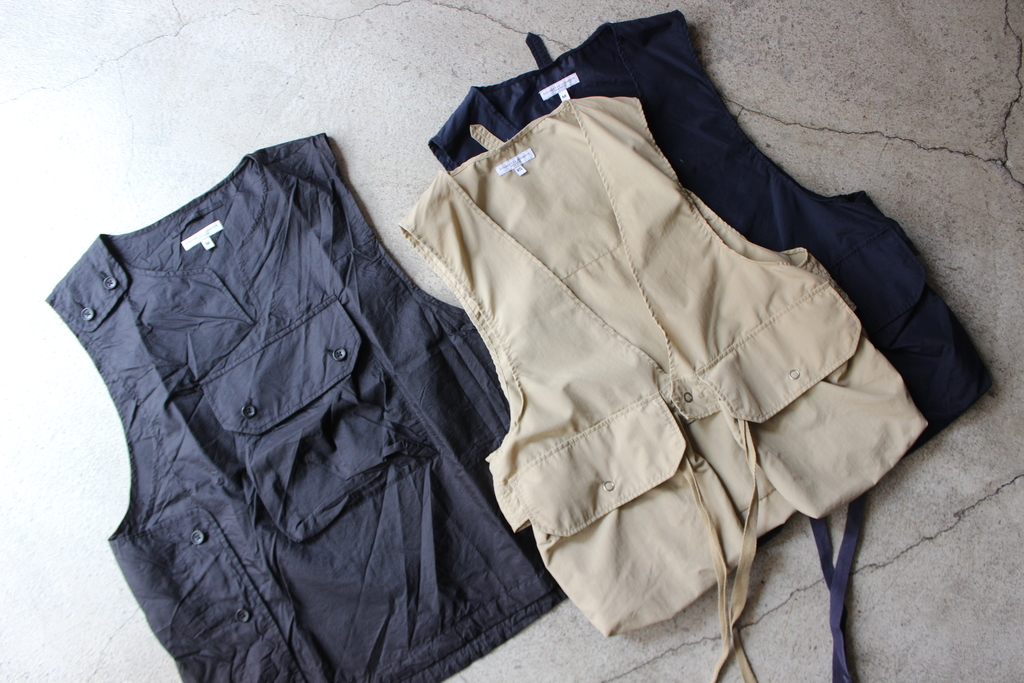
The taxonomy of vest boils down to two types: storage-oriented vests (better for warm weather) and insulation-oriented vests. Photographer’s and safari vests fall into the storage category–when it comes down to it, they’re just grouped pockets you drape over your shoulders. In the last few years, designers have taken this concept further, creating vests and “chest rigs” (it’s a whole Alyx category) that are really more bags than clothing, and walking the line between utility wear and fetish harnesses. I find those designs, with their body-hugging fit and 3D pockets, conceptually interesting and even fun, but well beyond the comfort zone of wearability for me (not to mention budget).
Photographer’s Vests
Photographer’s-style vests are usually lightweight with a ton of pockets. Although their history is hard to pin down, as cameras and gear became more portable in the mid-20th century, it’s likely that pro (and then amateur) photographers started wearing fishing vests to carry many rolls of film, extra lenses, and other gear they might need within arm’s reach when shooting on the fly. True fishing vests are often short (so they don’t get wet when you’re wading), while photo vests are usually waist length or longer. Most often, they’re khaki-toned.
Modern photographer’s vests have gotten more and more tactical looking, and are considered pretty nerdy even within the photography community; handy, sure, but almost a costume.
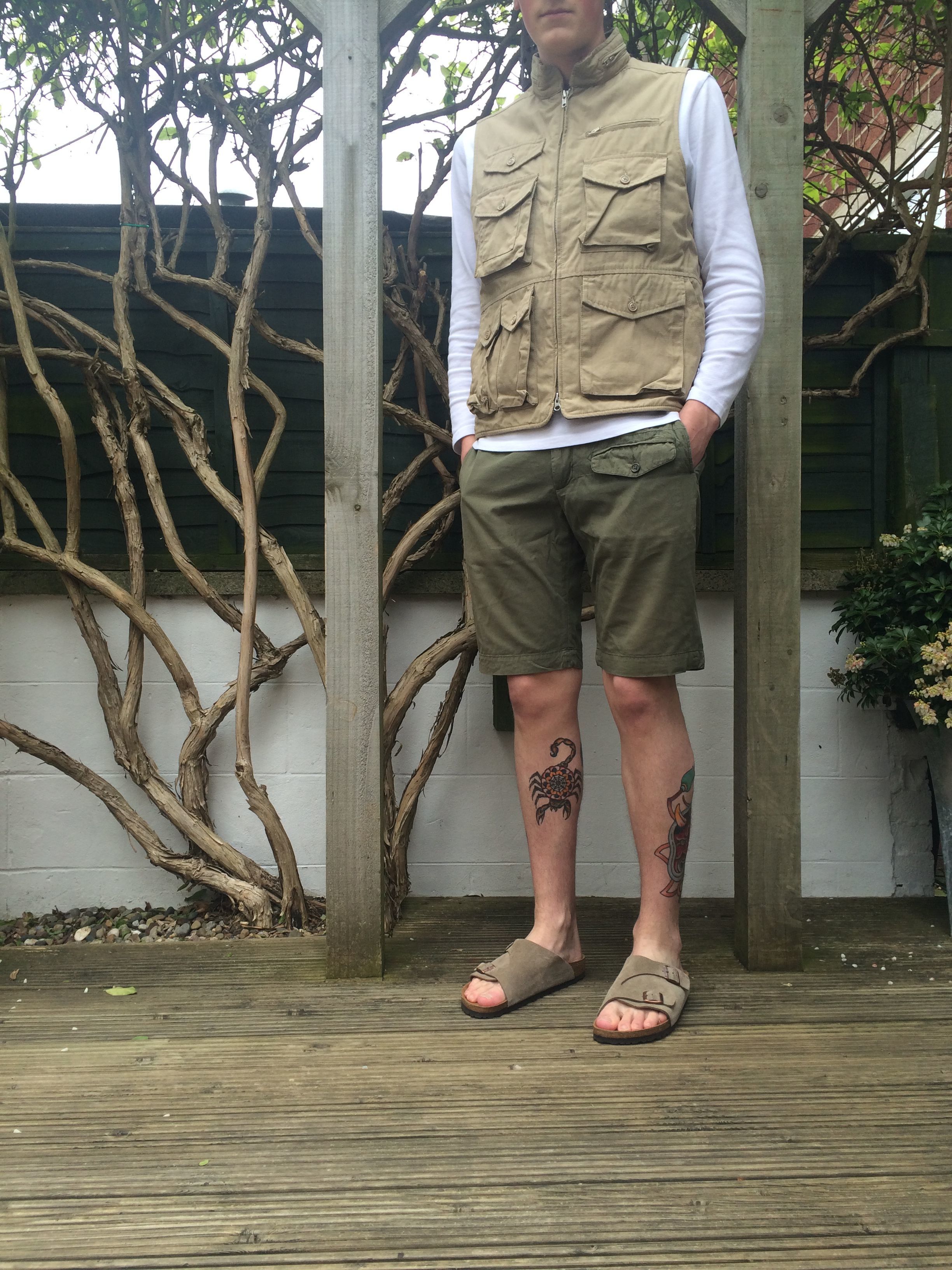
Vintage versions from outfitter brands like Banana republic, Willis and Geiger, or L.L. Bean are moderately more wearable. There’s some overlap here with adventure/safari vests. The easiest to wear are the simplest — fewer epaulets and D rings, solid rather than mesh pockets, etc. Designer takes like Engineered Garments are more removed from their origins and therefore easier to wear without a Leica or knowledge of darkroom processes.
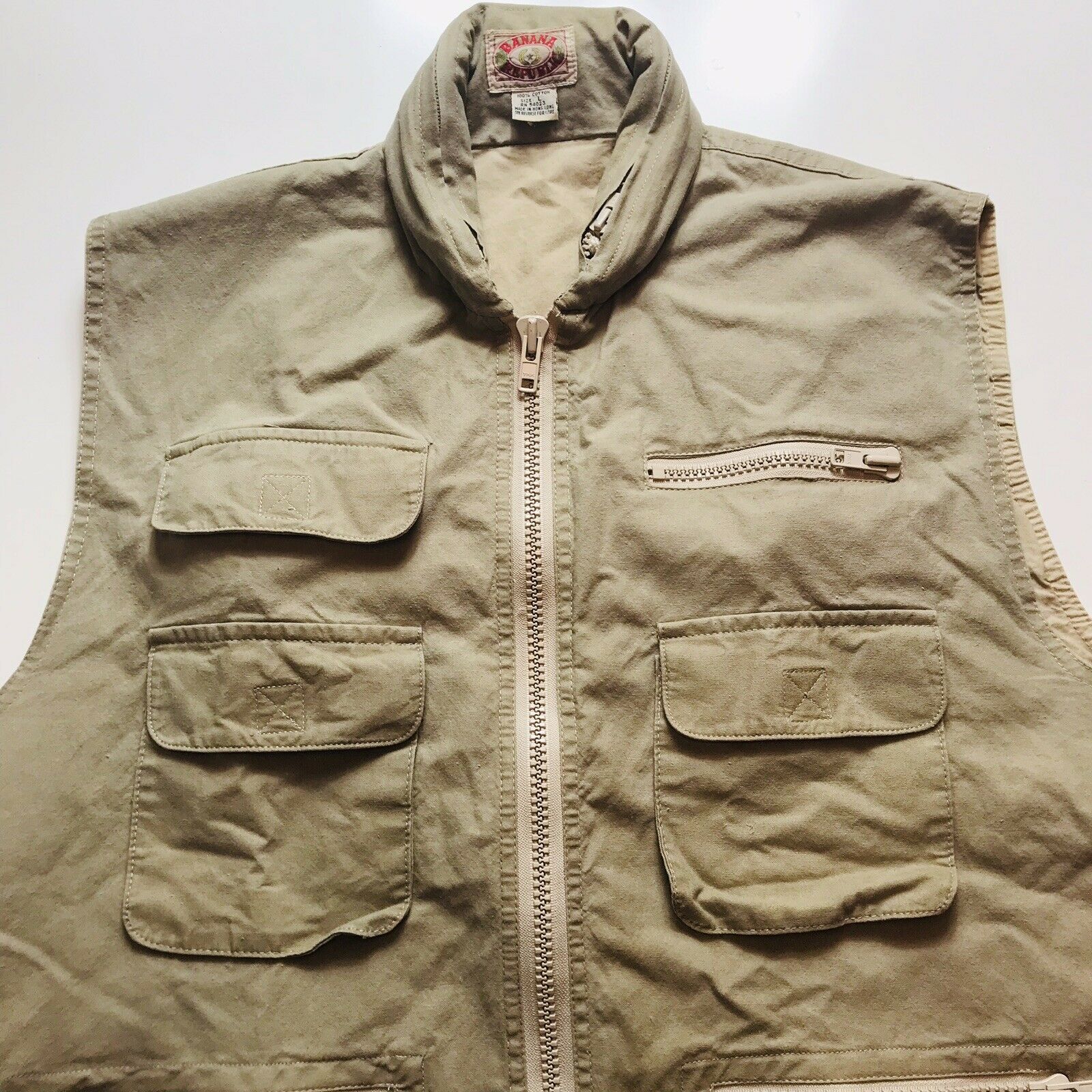
On the tech-ier side, Carhartt WIP’s current Elmwood vest balances sports and military influences without being full SWAT team gear.
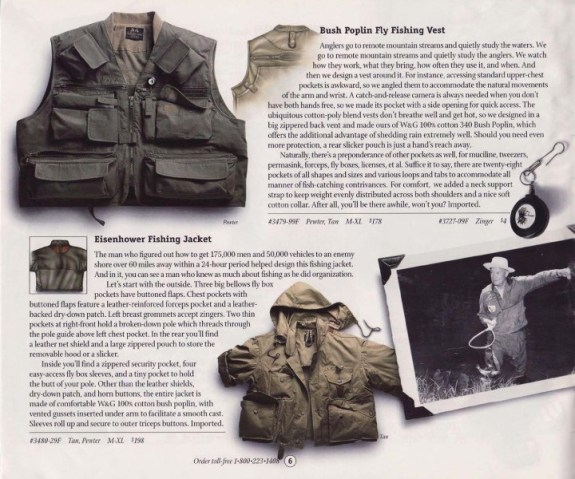
Whether they’re technically photographer, bush/safari, or fishing vests, when worn outside of their intended environment, they often look best as a top layer. They work better with tshirts, in my opinion, than collared knits/polos. They’re a natural fit with collared wovens like chambray button downs, and can look surprisingly OK with sweatshirts. Simpler vests can layer under casual/work-influenced button jackets from brands like Universal Works or Margaret Howell.
Workwear/Hunting Vests
On the insulation side are work and hunting vests — the basic/source examples of which are the Carhartt insulated duck vest (Carhartt WIP does a very similar vest with a slimmer fit and double zip for a mere $140 more)and the Filson Mackinaw model, which was a mainstay of the urban lumberjack wardrobe a few years ago. The basic Carhartt model is, in my opinion, a great value at $60 or less. They’re warm when zipped, wearable open, and the brown duck color looks perfect paired with indigo denim or olive drab.
The Filson is a little trickier; in plaids it’s hard for me to disassociate from the Daniel-Plainview-in-the-city, Red Wings and tight selvage denim outfit that dominated casual menswear for a long time. In quieter tones, the design can be a great insulating layer — there’s little question the Filson fabric is hard wearing and warm. Wearing them with other outdoors, but not hunting-oriented, clothing can soften the skeet shooting vibe. Lines like Sassafras, or vintage workwear styles like Old Town or Le Laboureur do this well.
